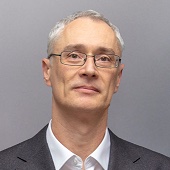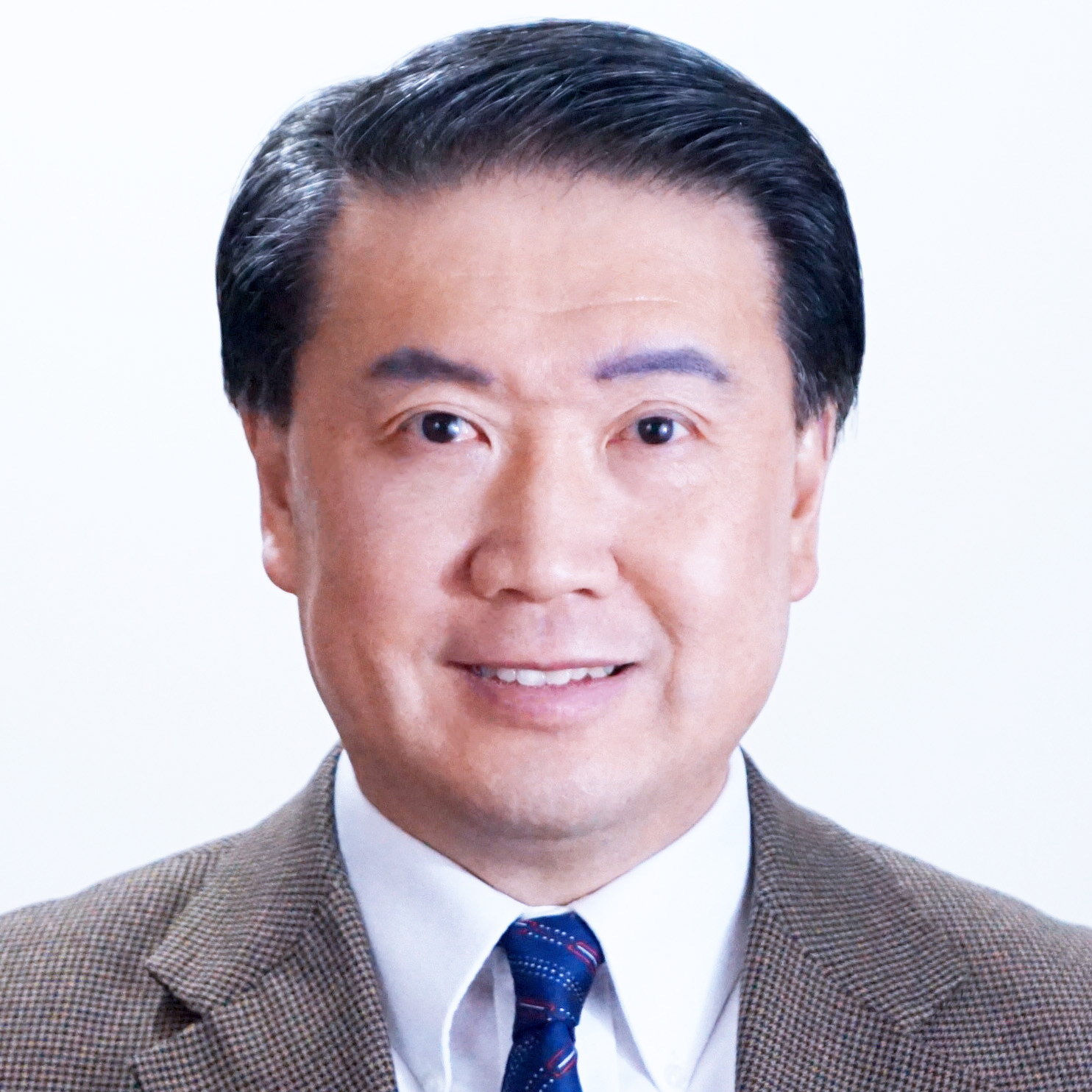
IEEE ICCE 2022 Tutorials
Tutorial 1:
Flat panel loudspeakers for consumer electronics
January 8, 2022 (10:30 - 11:00 EST)

Professor Mark F. Bocko
University of Rochester and ADVIS Inc.
The evolution of display-based consumer electronics toward increasingly thin
form factors presents a formidable challenge for the integration of audio in
devices ranging from TV’s to smartphones. Conventional loudspeaker designs are
inherently incompatible with the packaging constraints of such devices, so the
concept of employing the display panel itself as a loudspeaker has motivated
researchers to revisit the development of flat-panel loudspeaker technology.
Attempts to develop flat panel loudspeakers date back nearly 100 years with the
filing of early “sound radiator” patent applications in the mid 1920’s. Efforts
to develop commercially viable flat panel loudspeakers have continued almost
continuously since then, however, the technology has yet to find widespread
application owing to a number of fundamental challenges. In this talk some of
the key challenges and shortcomings of flat panel speakers will be discussed and
a number of possible solutions will be illustrated. Promising results from blind
listening tests of flat panel loudspeakers prototypes versus prosumer grade
loudspeakers also will be presented.
The fundamental problem of flat panel loudspeaker design is that they are inherently multiple degree of freedom systems, i.e., the spectrum of discrete vibrational bending modes of the panel. Conventional loudspeakers are purposely designed to have a single mechanical degree of freedom, i.e., the uniform displacement of the loudspeaker cone. The excitation of lightly damped, high frequency panel modes is a primary source of audio distortions and irregular radiation patterns in flat panel loudspeakers. Employing a “modal crossover” method to selectively control the modal response of a panel has been demonstrated to give a marked improvement in both the frequency response and radiation characteristics of such loudspeakers. Maximizing the mechanical damping of the panels also contributes significantly to their audio quality.
A further intriguing capability of flat panel speakers is that by employing an array of force exciters to simultaneously control multiple panel modes, it is possible to spatially localize the vibrations of a panel. This can be used to create multi-channel audio from a single panel or to dynamically control the location of a primary sound source on a panel to spatially bind acoustic sources to moving video images.
This tutorial is divided into two parts. In the first, an overview of the problems and the approaches proposed to overcome these problems will be covered, and in the second part an equivalent circuit modeling approach for the low-frequency design of such systems will be outlined.
The fundamental problem of flat panel loudspeaker design is that they are inherently multiple degree of freedom systems, i.e., the spectrum of discrete vibrational bending modes of the panel. Conventional loudspeakers are purposely designed to have a single mechanical degree of freedom, i.e., the uniform displacement of the loudspeaker cone. The excitation of lightly damped, high frequency panel modes is a primary source of audio distortions and irregular radiation patterns in flat panel loudspeakers. Employing a “modal crossover” method to selectively control the modal response of a panel has been demonstrated to give a marked improvement in both the frequency response and radiation characteristics of such loudspeakers. Maximizing the mechanical damping of the panels also contributes significantly to their audio quality.
A further intriguing capability of flat panel speakers is that by employing an array of force exciters to simultaneously control multiple panel modes, it is possible to spatially localize the vibrations of a panel. This can be used to create multi-channel audio from a single panel or to dynamically control the location of a primary sound source on a panel to spatially bind acoustic sources to moving video images.
This tutorial is divided into two parts. In the first, an overview of the problems and the approaches proposed to overcome these problems will be covered, and in the second part an equivalent circuit modeling approach for the low-frequency design of such systems will be outlined.
Mark F. Bocko joined the ECE Department at the University of Rochester in 1985.
His research spans multiple areas of basic and applied science including early
work on the quantum limits of force detection for gravitational wave detectors,
the development of high-speed superconducting digital electronics, and
superconducting quantum computing. He also has worked on low power CMOS
integrated circuits for wireless vibration and acoustic sensors,
high-dynamic-range, low-power CMOS image sensors, and non-contact ECG sensors.
His current research focus is in the areas of electroacoustics and spatial
sound. Bocko served as Chair of his department from 2004-2010 and 2012-2020 and
he founded the University of Rochester’s Audio and Music Engineering program in
2012. He has been the recipient of 5 University teaching awards and in 2008 he
was named the Mercer Brugler Distinguished Teaching Professor of the University.
He is the author of more than 160 publications and 34 patents, granted and
pending.
Tutorial 2:
Getting your geek on: from computing theory to practice
January 8, 2022 (11:00 - 11:30 EST)

Professor Milan Vidaković
Department Director, University of Novi Sad
Couple of years ago I decided to make a computer from scratch. I had to design
everything: instruction set, internal architecture, and interface to
peripherals. I used FPGA development board to implement the core of the system.
Then I added VGA graphics, UART, keyboard, mouse, SD card and Ethernet
connectivity. In parallel, I invented my own assembler, modified GCC to work
with my architecture and started making applications. Being able to design every
important bit of the system, it was easy to enhance/improve it. Enter the magic
world of GCC, assembler, cache, DMA, blitting, graphics acceleration, etc.
Milan Vidaković was born in Novi Sad, Yugoslavia (nowadays Serbia), in 1971. He
received the B.Sc. degree in electrical engineering from the University of Novi
Sad, Novi Sad, Yugoslavia, in 1995, and the M.Sc. and Ph.D. degrees in
electrical engineering from the University of Novi Sad, in 1998 and 2003,
respectively. In 1995 he joined the department for Computing and Control of the
Faculty of Technical Sciences, University of Novi Sad as a teaching assistant.
In 2004 he became assistant professor, in 2009 he became associate professor,
and in 2014 he became full professor at the same university. His current
research interests include agent technology, distributed computing,
object-oriented programming, web programming, IoT, Android programming, and
internationalization/localization.

Professor Milan Vidaković
Department Director, University of Novi Sad
Couple of years ago I decided to make a computer from scratch. I had to design
everything: instruction set, internal architecture, and interface to
peripherals. I used FPGA development board to implement the core of the system.
Then I added VGA graphics, UART, keyboard, mouse, SD card and Ethernet
connectivity. In parallel, I invented my own assembler, modified GCC to work
with my architecture and started making applications. Being able to design every
important bit of the system, it was easy to enhance/improve it. Enter the magic
world of GCC, assembler, cache, DMA, blitting, graphics acceleration, etc.
Milan Vidaković was born in Novi Sad, Yugoslavia (nowadays Serbia), in 1971. He
received the B.Sc. degree in electrical engineering from the University of Novi
Sad, Novi Sad, Yugoslavia, in 1995, and the M.Sc. and Ph.D. degrees in
electrical engineering from the University of Novi Sad, in 1998 and 2003,
respectively. In 1995 he joined the department for Computing and Control of the
Faculty of Technical Sciences, University of Novi Sad as a teaching assistant.
In 2004 he became assistant professor, in 2009 he became associate professor,
and in 2014 he became full professor at the same university. His current
research interests include agent technology, distributed computing,
object-oriented programming, web programming, IoT, Android programming, and
internationalization/localization.
Tutorial 3:
Emergent Universal Turing Machines in Developmental Networks: Vision, Audition, Natural Languages, APFGP and Thinking
January 9, 2022 (11:00 - 11:30 EST)

Professor Juyang Weng
Michigan State University
Autonomous development needs a general-purpose theory and experimental studies
require such a theory. Finite automata (a.k.a. finite-state machines) have been
taught in almost all electrical engineering programs. However, Turing machines,
especially universal Turing machines (UTM), have not been taught in many
electrical engineering programs and were dropped in many computer science and
engineering programs as a required course. This resulted in a major knowledge
weakness in many people working on neural networks for developmental AI. Without
knowing UTM, researchers have considered neural networks as merely
general-purpose function approximators instead of general-purpose computers.
This tutorial first briefly explains what a Turing machine is, what a UTM is, why a UTM is a general-purpose computer, and why Turing machines and UTMs are all symbolic and handcrafted for a specific task. In contrast, a Developmental AI system must program itself through lifetime, instead of being programmed for a specific task. The Developmental Network (DN) by Weng et al. is a new kind of neural network that avoided the controversial Post Selection---selection of networks after they have been trained. A DN learns to become a general-purpose computer by learning an emergent UTM directly from the physical world, like a human child does. Because of this fundamental capability, a UTM inside a DN emerges autonomously on the fly, realizing APFGP (Autonomous Programming For General Purposes), 3D-to-2D conscious learning and machine thinking. The well-known three bottleneck problems in AI, vision, audition, and natural language understanding are all naturally dealt with in DN experiments to be presented in the tutorial.
Prerequisite knowledge: general knowledge about AI and machine learning. Target audience and interested groups: Professors, industrial researchers, practitioners, post doctorial researchers, graduate students, AI writers, news reporters, government AI policy makers, AI philosophers, and AI fans.
This tutorial first briefly explains what a Turing machine is, what a UTM is, why a UTM is a general-purpose computer, and why Turing machines and UTMs are all symbolic and handcrafted for a specific task. In contrast, a Developmental AI system must program itself through lifetime, instead of being programmed for a specific task. The Developmental Network (DN) by Weng et al. is a new kind of neural network that avoided the controversial Post Selection---selection of networks after they have been trained. A DN learns to become a general-purpose computer by learning an emergent UTM directly from the physical world, like a human child does. Because of this fundamental capability, a UTM inside a DN emerges autonomously on the fly, realizing APFGP (Autonomous Programming For General Purposes), 3D-to-2D conscious learning and machine thinking. The well-known three bottleneck problems in AI, vision, audition, and natural language understanding are all naturally dealt with in DN experiments to be presented in the tutorial.
Prerequisite knowledge: general knowledge about AI and machine learning. Target audience and interested groups: Professors, industrial researchers, practitioners, post doctorial researchers, graduate students, AI writers, news reporters, government AI policy makers, AI philosophers, and AI fans.
Juyang Weng is Professor at the Department of Computer Science and Engineering,
the Cognitive Science Program, and the Neuroscience Program, Michigan State
University, East Lansing, Michigan, USA. He is also a visiting professor at
Fudan University, Shanghai, China. He received his BS degree from Fudan
University in 1982, his MS and PhD degrees from University of Illinois at
Urbana-Champaign, 1985 and 1989, respectively, all in Computer Science. From
August 2006 to May 2007, he is also a visiting professor at the Department of
Brain and Cognitive Science of MIT. His research interests include computational
biology, computational neuroscience, computational developmental psychology,
biologically inspired systems, computer vision, audition, touch, behaviors, and
intelligent robots. He is the author or coauthor of over 250 research articles.
He is an editor-in-chief of the International Journal of Humanoid Robotics and
an associate editor of the IEEE Transactions on Autonomous Mental Development.
He has chaired and co-chaired some conferences, including the NSF/DARPA funded
Workshop on Development and Learning 2000 (1st ICDL), 2nd ICDL (2002), 7th ICDL
(2008), 8th ICDL (2009), and INNS NNN 2008. He was the Chairman of the Governing
Board of the International Conferences on Development and Learning (ICDLs)
(2005-2007), chairman of the Autonomous Mental Development Technical Committee
of the IEEE Computational Intelligence Society (2004-2005), an associate editor
of IEEE Trans. On Pattern Recognition and Machine Intelligence, an associate
editor of IEEE Trans. on Image Processing. He was the General Chair of AIML
Contest 2016 and taught BMI 831, BMI 861 and BMI 871 that prepared the
contestants for the AIML Contest session in IJCNN 2017 in Alaska. AIML Contests
have run annually since 2016. He is a Fellow of IEEE.

